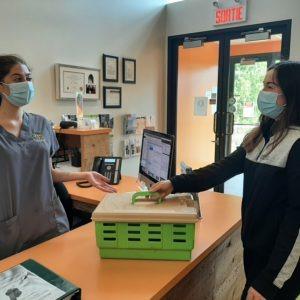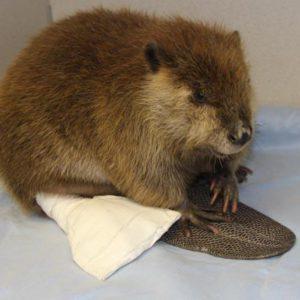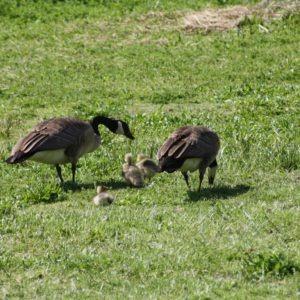Emergency veterinarians are often asked to triage and treat wildlife patients. However, many veterinarians may have limited experience in wildlife medicine and be uncertain about assisting in such cases. This article will discuss what an emergency practitioner may do to assist in triage and temporary care of a wildlife patient until it can be transferred to a licensed wildlife rehabilitator. If you live in a country that does not yet have government oversight of wildlife rehabilitation, contact your regional office that oversees natural resources or conservation on how you may assist when presented with a wildlife emergency.
In most areas of the world, there are now animals designated as feral or invasive. A species is designated as such because they are (or could be) detrimental to both native species and ecosystems. These designations are not taken lightly and are generally backed by research and information from the past fifty to one hundred years. As an example, there are generally three designations, prohibited, invasive, or non-native in the US. While these designations have different legal meanings, no species listed in any of these categories may be released back to the wild or held without special permitting. Thus in the majority of situations euthanasia is legally required. Keeping this in mind, it is best to check in with your local rehabilitator or regional officials for a list of species that are not able to be treated. Keep contact information on hand in case you are ever unsure of an animal’s status. Knowing which common species are labeled as such will save time and resources and help ensure animal welfare is a top priority. This information is generally available online via government regulatory documents.
Public Health
We don’t want uniformed members of the public taking wildlife care into their own hands, especially when zoonotic disease transmission is possible. While rabies may be one of the first things that comes to mind a plethora of other zoonotic diseases are possible. In 2017 the One Health Disease Prioritization Workshop ranked zoonotic diseases by threat level. Of the eight diseases cited four are of high concern for wildlife rehabilitators (salmonella, plague, rabies, and Lyme disease). It is important therefore to encourage people to relinquish wildlife to professionals, and ensure proper documentation of those who have had contact with wildlife in case a zoonotic disease is diagnosed.
Public Relations
In the age of social media, emergency veterinarians know all too well the sting of the negative online review. Triaging wildlife is another way to combat negative perceptions. When people find a wild animal they are often desperate for a solution. Giving quality information and facilitating transfer of the animal to a rehabilitator is a public service that is much appreciated.
Legality
One of the most important aspects of treating wildlife is ensuring you do it legally. We cannot cover all aspects of this here, however, there are a few things to keep in mind. First, euthanizing wildlife for humane reasons should not be delayed due to fear of litigation. Unless you live in a country where animal euthanasia is not permitted, euthanasia on grounds of animal welfare is generally acceptable. Second, some countries, states, and provinces have stricter laws than others. If you live in the United States most states allow you to temporarily care for wildlife, as long as the animal is transferred to a permitted rehabilitator within a specific time. Third, remember that wildlife you treat may be considered a food animal (ducks, geese, squirrels, etc.) so ensure you keep prohibited drugs and food animal drug residues in mind.
Below we have a few documents on legality of treating wildlife. If you don’t see your country represented feel free to send us an email so we can add it to the list.
Working with Rehabilitators
Wildlife rehabilitators vary in knowledge and experience just as veterinarians do. Some rehabilitators work alone, others as part of a home based network, and others at large wildlife rehabilitation centers. Generally, the average wildlife rehabilitator is an expert in natural history, husbandry, and nutrition, with a basic understanding of anatomy and physiology for the species they rehabilitate. Just as in veterinary medicine, there is no substitute for experience. rehabilitators may have completed advanced courses and training and many have been working with the same species for years, if not decades. This allows them special insight when it comes to the species they work with, and it is important to ensure collaboration when it comes to care or treatment. Like veterinarians, rehabilitators want what is best for the animals in their care. The Rehabilitators Code of Ethics is integral to wildlife care and is an excellent starting point for veterinarians looking to assist with or incorporate wildlife triage or medicine into their practice. Meeting to discuss both parties’ expectations and needs as well as signing a Memorandum of Understanding, should be the first step in working together to help wildlife. Open communication and a willingness to listen and learn from each other help partnerships between rehabilitators and veterinarians flourish.
Facilities/PPE
Creating a space for temporary wildlife care does not need to be complicated. Placing a rollaway cage, with a heating pad in a quiet exam room will suffice. The main requirements are that the area is quiet (little to no noise from domestic animals or humans), clean (including minimal animal scent for mammals), and secure. Unless the container is damaged, you may decide to leave the animal in the transport box after your assessment. Just ensure the box is secure and the animal cannot escape. Caution should be taken when setting up an area for temporary care if transmissible pathogens are a risk. Common pathogens of concern include rabies, parvovirus, and distemper in mammals, mycoplasma and salmonella in avians, and a plethora of pathogens in reptiles including herpesvirus, ranavirus, mycoplasma, and more.
The Process
When a wild animal is admitted it is best to have one employee take the animal to a dedicated wildlife area immediately. The box should remain closed in the waiting room. If a person carries the animal into the clinic, in hand or arms, the front desk staff should immediately provide a container for the animal to be placed in. Staff should not be deterred if the finder tries to reassure them or wave the box away. Generally people do not understand wildlife behavior, and take docility as a sign of comfort instead of terror or neurologic impairment. Depending on your facility, you may prefer to have the animal brought to a back entrance to decrease the stress of passing through a busy waiting room.
As with any admission, accurate information is important. Having a dedicated intake form for wild animals is strongly recommended. The intake form should include an area for the finder to list their contact information, as well as an area to denote where and when the animal was found. You may also include an area where the finder can denote behavior they observed before capture, if they rendered any care, and most importantly, the names of anyone who had contact with the animal or who was bitten/scratched. An example has been provided below, which you are welcome to use. The form should be completed to the best of the finders ability. Support staff should be instructed to verbally remind the finder that their contact information will only be used in the case a communicable zoonotic disease is diagnosed. If finders wish to follow up on the animal, direct them accordingly. Most rehabilitators allow finders to follow up and may even contact the finder to help with release.
Exam
Rehabilitators often move fluidly between different forms of exam based on the condition of the patient. The initial exam may not be a full PE, but a quick visual assessment to evaluate condition and if there are any immediate issues that warrant euthanasia (see list below). If the animal is clearly in need of euthanasia, it should be rendered immediately to prevent undue suffering. If the animal does not appear to be in severe distress you may either proceed to a full physical exam or render initial care in the form of analgesia, fluid therapy, and supplementary heat until the animal appears more stable.
As you proceed to the physical exam, ensure you have all necessary equipment on hand. You do not want to waste time looking for the fluorescein stain or running back to get your stethoscope when the animal is restrained. Keep in mind that wildlife must be restrained appropriately. Having staff members trained to restrain wildlife and the safety equipment to do so is imperative. In addition, decreasing stress for the patient is absolutely necessary. Performing the exam in a quiet place and covering the head/eyes of the patient are both easy and quick ways to significantly reduce stress in wild animals.
You should perform your physical exam as you would on any domestic animal. Proceed in the manner you normally would (i.e. nose to toes) and get an accurate weight and TPR if possible.
Treatment
There are some procedures and treatments commonly used in domestic animals that should not be used on wild animals that are going to be released. Such procedures include amputation, enucleation, spaying/neutering. In addition, we must be mindful of drug residues as many wild animals are also considered food animals throughout the year.
Euthanasia
The goal of wildlife rehabilitation is to release fully functional, competitive animals back into their native habitat. This picture illustrates what needs to be met for an animal to be releasable. Take a moment to consider what you see, what are these geese doing? What can you assume they are capable of?
Certainly we often find that we have animals that we can treat successfully, but we must weigh what their release chances will be, and what is best for the environment we are releasing them back into. We would never try to release a bird with only one wing, but what about a raccoon that has been neutered? While it may seem harmless, the raccoon has been effectively deprived of its ability to fulfill its biological imperative. In some ways we have surely made the animal less competitive as we have removed hormonal stimulation and drive. Additionally, the animal will now take up resources that other animals could use to survive and produce young.
Listed here are conditions which more often than not warrant euthanasia. As always use your medical judgment and work with your wildlife rehabilitators if you feel a case may not require euthanasia.
- Severe or extensive soft tissue injury
- Joint fracture or dislocation
- Loss of limb
- Open fracture
- Ruptured/exposed organ
- Permanent dental condition
- Severe emaciation
- Untreatable disease (i.e. avian pox)
- Legal reasons (i.e. invasive species)
- Very young neonates
- Sensory impairment
- Imprinting or habituation
- Permanent musculoskeletal abnormalities
A note about Herptile euthanasia
Euthanasia of herptiles and confirmation of death can be difficult, especially with regard to chelonians. All veterinarians should be advised that freezing herptiles as a form of euthanasia is absolutely never recommended and is considered animal cruelty. As with domestic animals herptiles should be sedated or anesthetized and then euthanized via intravenous (IV), intracardiac (IC) or intracoelomic (ICe) injection.
In addition to use of injectable euthanasia drugs, it is now recommended that all chelonians be pithed after death has been “confirmed”. This is due to their unique physiology and slow metabolism, which may allow them to appear dead, when in fact they may still reanimate after significant time has passed.
For more information and training slides/video please go to Lafebervet.com and see the webinar presented by IWRC instructor Renee Schott, DVM.
Quick References and Resources
Do:
- Have a contact list of active, licensed wildlife rehabilitators in your area with their hours of operation.
- Have a completed Memorandum of Understanding (MOU) with each rehabilitator you work with.
- Get complete and accurate information from the finder including the location the animal was found and how long it was kept.
- Place the animal in a quiet area away from domestic animals and normal noise of practice.
- If comfortable, proceed with the initial physical exam, provide fluid support, analgesia, and supplementary heat as needed. Alternatively, provide immediate humane euthanasia if warranted.
- Do take appropriate pictures of the patient while performing physical exam and treatments
- Do transfer the animal as soon as possible to a licensed rehabilitator.
Do Not:
- Let a finder get away without disclosing contact information
- Place a wild patient in wards with domestic animals
- Allow staff to take inappropriate photos or selfies of/with wildlife patients
- Allow staff to handle wildlife without appropriate PPE
Resources:
Lafebervet.com – Topics in wildlife/exotic animal practice (US/English)
Born Free Veterinary Resources – Topics in wildlife practice (UK/English)
International Wildlife rehabilitation Council
National Wildlife Rehabilitation Association
Practicing Wildlife Rehabilitation within Legal Restrictions – by Dr Elizabeth Mullineaux
Legal Responsibilities and Restrictions on Veterinarians Working with Wildlife – NWRA Bulletin
Venipuncture sites – Listed by ease of access
- Mammal
- Generally as in domestic/exotic animals
- Avian
- Right jugular vein
- Medial Metatarsal vein (excellent for waterfowl, raptors)
- Ulnar vein (AKA Basilic vein; size restricts use to larger/anesthetized birds)
- Herptile
- Squamates
- Tail vein
- Ventral abdominal vein
- Chelonians
- Jugular vein
- Subcarapacial vein (lymph dilution possible)
- Ventral caudal vein (Tail vein)
- Squamates
Subcutaneous fluid administration sites
- Mammal
- Intrascapular
- Avian
- Inguinal skin fold
- Herptile
- Squamates
- Any area of loose skin along the trunk (lizards)
- Warm water soak also recommended if neurologically sound/no wounds
- Squamates
- Chelonians
- Pre-scapular
- Warm water soak also recommended if neurologically sound/no wounds
IM injection Sites
- Mammal
- Generally as in domestic/exotic animals
- Avian
- Pectoral
- Herptile
- Squamates
- Antebrachium (Lizards)
- Epaxial (Snake)
- Squamates
- Chelonians
- Antebrachium
Recommended Drug Formularies
Exotic Animal Formulary by James W. Carpenter
NWRA Wildlife Formulary 4th edition
Veterinary Information Network
Helpful examples
Intake sheet










Leave a Reply
You must be logged in to post a comment.